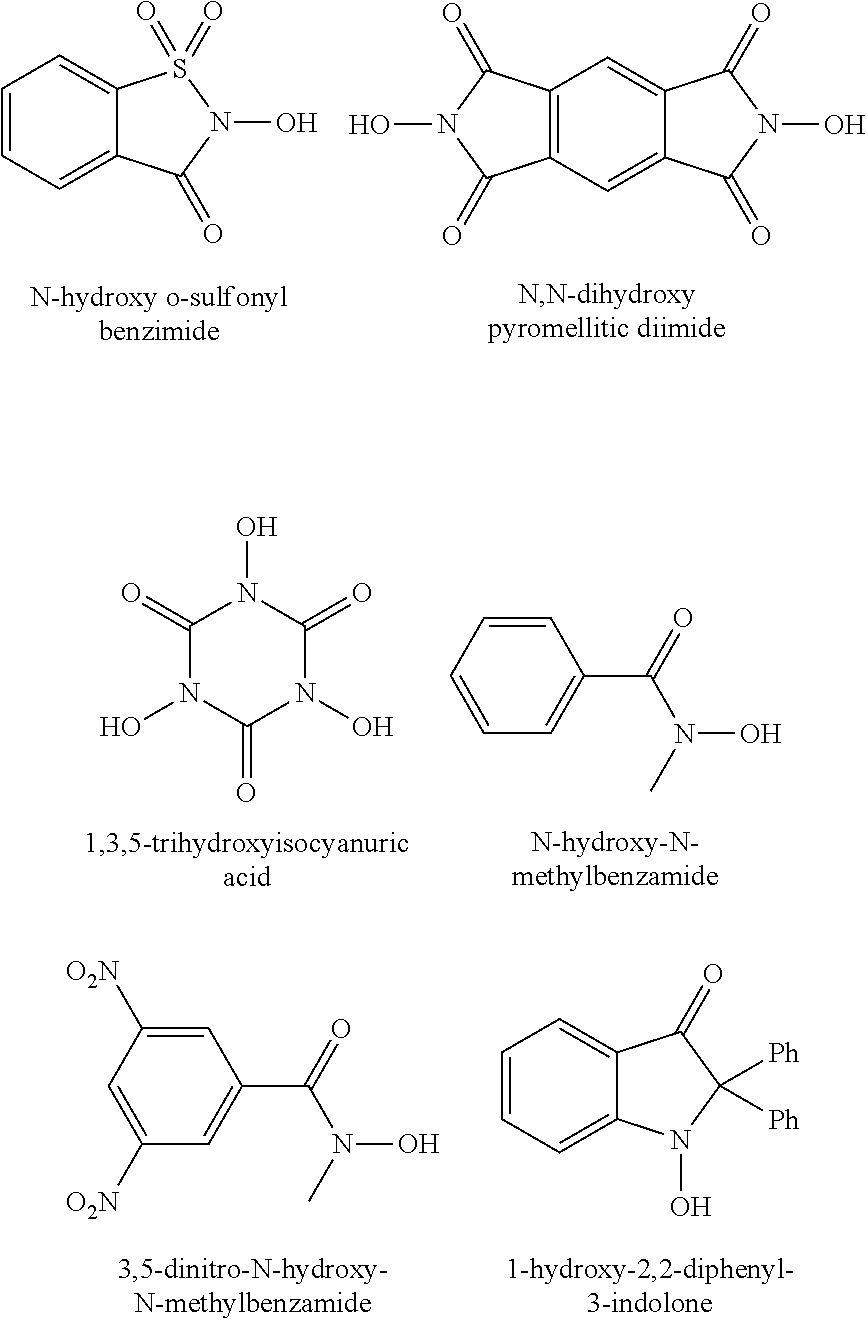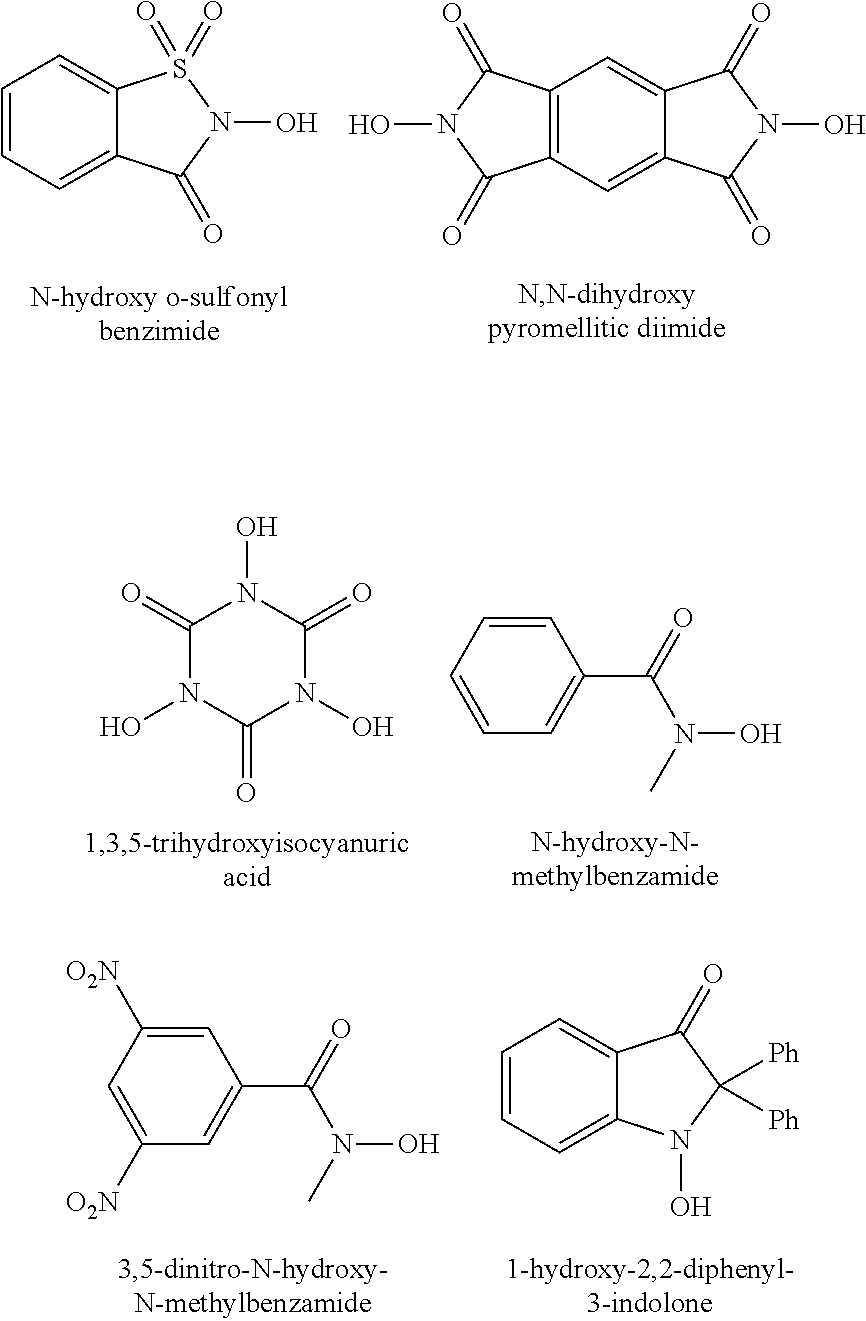Method of catalytic oxidation of lignite using oxygen as oxidant at atmospheric pressure
- Summary
- Abstract
- Description
- Claims
- Application Information
AI Technical Summary
Benefits of technology
Problems solved by technology
Method used
Image
Examples
embodiment 1
[0031] The process comprises the following steps: pulverizing Shengli lignite to 200 meshes or less, drying a pulverized coal sample at a temperature of 80° C. in vacuum for 10 h, weighing 0.5 g of the treated coal sample, sequentially adding 10 ml of acetic acid, 0.5 mmol of N-hydroxy o-sulfonyl benzimide and 0.15 mmol of manganese acetate into a round-bottom flask, connecting a tee joint to an upper orifice of a condenser pipe, replacing oxygen in vacuum for three times so that the round-bottom flask is filled with the oxygen, keeping the oxygen pressure at 0.1 MPa, reacting at a temperature of 120° C. for 4 h, and observing the reaction conditions; filtering after the reaction is finished; decompressing a filtrate to remove the acetic acid, adding a small amount of ethyl acetate to dissolve, then adding an excess CH2N2 / ether solution to esterify at room temperature for 10 h, using 0.45 μm filter paper to filter, and analyzing an esterified product through GC / MS.
[0032]A total of 1...
embodiment 2
[0033] The process comprises the following steps: pulverizing Shengli lignite to 200 meshes or less, drying a pulverized coal sample at a temperature of 80° C. in vacuum for 10 h, weighing 0.5 g of the treated coal sample, sequentially adding 10 ml of acetic acid, 0.5 mmol of N,N-dihydroxy pyromellitic diimide and 0.20 mmol of copper acetate into a round-bottom flask, connecting a tee joint to an upper orifice of a condenser pipe, replacing oxygen in vacuum for three times so that the round-bottom flask is filled with the oxygen, keeping the oxygen pressure at 0.1 MPa, reacting at a temperature of 80° C. for 12 h, and observing the reaction conditions; filtering after the reaction is finished; decompressing a filtrate to remove the acetic acid, adding a small amount of ethyl acetate to dissolve, then adding an excess CH2N2 / ether solution to esterify at room temperature for 10 h, using 0.45 μm filter paper to filter, and analyzing an esterified product through GC / MS.
[0034]A total of ...
embodiment 3
[0035] The process comprises the following steps: pulverizing Shengli lignite to 200 meshes or less, drying a pulverized coal sample at a temperature of 80° C. in vacuum for 10 h, weighing 0.5 g of the treated coal sample, sequentially adding 10 ml of acetic acid, 0.5 mmol of 1,3,5-trihydroxyisocyanuric acid and 0.251 mmol of manganese dioxide into a round-bottom flask, connecting a tee joint to an upper orifice of a condenser pipe, replacing oxygen in vacuum for three times so that the round-bottom flask is filled with the oxygen, keeping the oxygen pressure at 0.1 MPa, reacting at a temperature of 100° C. for 10 h, and observing the reaction conditions; filtering after the reaction is finished; decompressing a filtrate to remove the acetic acid, adding a small amount of ethyl acetate to dissolve, then adding an excess CH2N2 / ether solution to esterify at room temperature for 10 h, using 0.45 μm filter paper to filter, and analyzing an esterified product through GC / MS.
[0036]A total ...
PUM
| Property | Measurement | Unit |
|---|---|---|
| Temperature | aaaaa | aaaaa |
| Temperature | aaaaa | aaaaa |
| Length | aaaaa | aaaaa |
Abstract
Description
Claims
Application Information
 Login to View More
Login to View More - R&D
- Intellectual Property
- Life Sciences
- Materials
- Tech Scout
- Unparalleled Data Quality
- Higher Quality Content
- 60% Fewer Hallucinations
Browse by: Latest US Patents, China's latest patents, Technical Efficacy Thesaurus, Application Domain, Technology Topic, Popular Technical Reports.
© 2025 PatSnap. All rights reserved.Legal|Privacy policy|Modern Slavery Act Transparency Statement|Sitemap|About US| Contact US: help@patsnap.com



